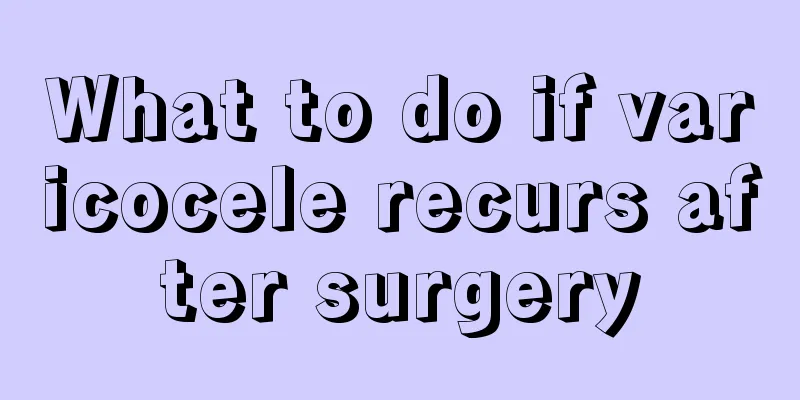Brief analysis of common diagnostic methods for latent lung cancer

|
Hidden lung cancer is a malignant tumor that causes serious harm to the patient's health. It is very important for patients to diagnose hidden lung cancer as early as possible. What are the common diagnostic methods for hidden lung cancer? The following will tell you about the common diagnostic methods for hidden lung cancer. In general, the common diagnostic methods for occult lung cancer are: 1. Fiberoptic bronchoscopy: Fiberoptic bronchoscopy can effectively determine the site of the primary lesion and facilitate surgical removal of cancerous lesions. This is a common diagnostic method for latent lung cancer. 2. PET scan: With the advancement of clinical medical technology, new diagnostic methods for latent lung cancer, such as PET scan, are increasingly used in the characterization and location of early latent lung cancer. Combined with other diagnostic methods, they can effectively detect latent lung cancer, help increase the diagnosis rate of latent lung cancer, and improve the prognosis of latent lung cancer. 3. CT scan: CT scan is a widely used method for diagnosing latent lung cancer in clinical practice. In addition to assisting in the detection of primary lesions, it can also determine the local infiltration and invasion of tumors, determine the staging of primary lesions, and guide later treatment. The primary lesions of latent lung cancer are often in the bronchial cavity or in more hidden parts of the lungs, such as near the paravertebral groove, the apex or the bottom of the lungs, especially near the posterior costophrenic angle and the diaphragmatic surface of the left lower lobe. On chest X-ray films, lesions in the above parts of the lungs are not easy to show, and lesions with a maximum diameter of less than 1 cm are even more difficult to show. 4. Sputum cytology: Clinically, finding cancer cells in sputum or bronchial lavage fluid is an important means of diagnosing latent lung cancer, especially in high-risk groups for lung cancer (such as heavy smokers with airway obstruction, occupational exposure, etc.). Sputum cytology (sputum or bronchial lavage fluid) combined with fiberoptic bronchoscopy is the most effective means of early detection of lung cancer. However, the oral cavity, nasopharynx, esophagus and other parts must be carefully examined repeatedly to exclude malignant tumors in these parts, because tumor cells may also be found in the sputum or bronchial secretions of patients with malignant tumors in these parts. This is also a common method for diagnosing latent lung cancer. The above is an introduction to the common diagnostic methods of latent lung cancer. I hope it will be helpful to everyone. Once you have latent lung cancer, you must go to the hospital for treatment in time to avoid serious delays in the disease. |
<<: Analyzing the four main causes of laryngeal cancer
>>: Common clinical symptoms of central lung cancer
Recommend
How long can pork be refrigerated?
Pork is a type of meat that we often eat nowadays...
Can canine fever be transmitted to humans?
Canine distemper is a disease with a certain peri...
What causes mouth ulcers in children
Oral ulcers are a common oral disease. Oral ulcer...
Is dust-free paper toxic?
We have heard relatively little about dust-free p...
The echo of liver parenchyma is uneven
Ultrasound images show uneven echogenicity of the...
What harm does general anesthesia do to the body
We all know that doctors have to give patients an...
Can anemia cause hair loss?
Hair loss has always been a common problem, and i...
What should patients with advanced lung cancer eat?
Patients with advanced lung cancer are advised to...
Characteristics of Traditional Chinese Medicine in Treating Colorectal Cancer
In the late stage of colorectal cancer, due to th...
What should thyroid cancer patients pay attention to
What should patients with thyroid cancer pay atte...
Chest pain after smoking
In modern society, more and more people smoke, an...
It turns out that there are so many benefits of Dianhong Golden Silk
Dianhong Gold Silk is also known as Yunnan's ...
What does Svino oral liquid treat?
Many people are born with bad stomachs and poor d...
Why do hyperplastic nodules appear in the breast?
Many women will still develop breast hyperplasia ...
What does breaking a basin at a funeral mean?
With the simplification of modern funerals, many ...









